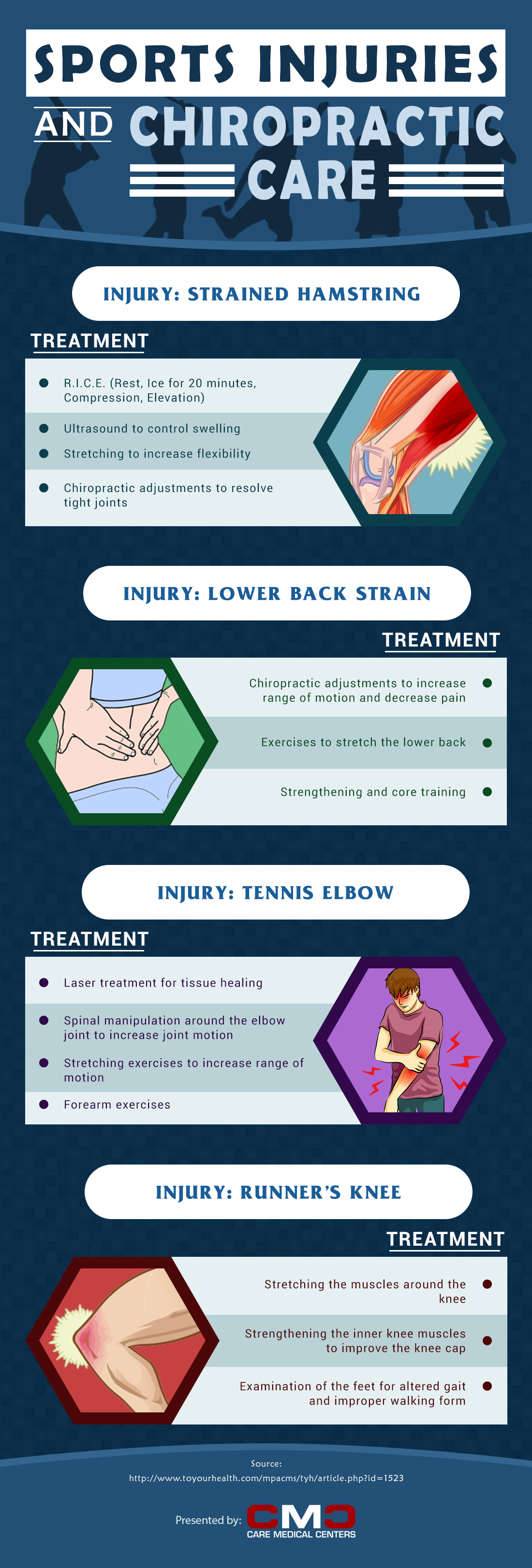Infographic: 4 Sports Injuries Where Chiropractic Care Can Make a Difference
This infographic titled ‘Sports Injuries and Chiropractic Care’ lists 4 injuries that can be treated with chiropractic treatment. Modern sports demand that we stretch our body to its limits. This is why sportsmen and women are always prone to injuries. However, these very injuries can put their entire career and hard work at risk. One of the recommended treatments for sportspeople is chiropractic care. Chiropractors manipulate the musculoskeletal structure to restore mobility and relieve pain.
Chiropractic treatment is preferred because it uses non-invasive means that are sometimes more effective than surgery. These 4 sports injuries are often treated by Chiropractors:
Strained hamstring
This is one of the most common sports injuries and treatment starts almost immediately. We start with the R.I.C.E method, which stands for rest, ice for 20 minutes, compression and elevation. An ultrasound is then performed on the area to control the swelling. A hamstring can make the muscles stiff. So, the chiropractor carries out stretching exercises to increase flexibility. This is followed by chiropractic adjustments to resolve tight joints.
Lower back strain
Lower back pain can severely limit the range of motion for a sportsperson, which is disastrous for them. Chiropractic care is aimed to increase the range of motion and decrease pain. The chiropractor takes the patient through exercises that are meant to stretch the lower back. The objective is strengthening and core training.
Tennis elbow
The treatment starts with laser treatment for tissue healing. The chiropractor will then undertake spinal manipulation around the elbow joint to increase joint motion. This is accompanied by stretching exercises to increase the range of motion and forearm exercises. Eventually, it restores mobility to the elbow joint.
Runner’s knee
The purpose here is to strengthen the inner knee muscles to improve the knee cap. The chiropractor will examine the feet for improper gait and improper walking form. He/she will then stretch the muscles around the knee.
For more details, please refer the infographic below.

- Posted by cmcadmin
- On July 25, 2019
- 0 Comments

0 Comments